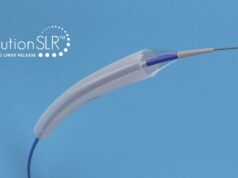
Cordis, a Cardinal Health company, has launched its Mynx Control vascular closure device onto the US market. A press release reports that the Mynx Control vascular control device integrates active extra vascular sealing and resorbability properties with a next-generation delivery system to maximise predictability, safety, and ease of use in sealing 5–7Fr femoral arterial access sites.
The press release adds that the vascular closure device features a next-generation deployment system that is designed for predictable deployment and ease of use. It will be available in 5Fr as well as 6/7Fr sizes. It says that the highlights of this new system include:
- Sheath catch that is compatible with the procedural sheath
- Tension indicator that provides visual confirmation of device position for proper sealant deployment
- Ergonomic handle with a two-button deployment design to simplify procedural steps.
Based on the MynxGrip vascular closure device technology, which has been used in over two million interventional cases worldwide, the Mynx Control device uses a dual-mode active sealing mechanism. This allows the sealant to interlock with the contours of the arterial wall, expanding to fill the tissue tract and create a matrix structure for clot formation. With all closure components resorbing within 30 days, nothing is left behind.
Ali Almedhychy, global medical director at Cordis, comments: “The notion of secure extravascular closure with nothing left behind is very appealing for a number of reasons. In addition to the clinical benefits of undisrupted flow in the artery, Mynx Control vascular closure device minimises technique-related issues and emphasizes simplicity and reproducibility.”
Patrick Holt, president at Cordis states: “Mynx Control vascular closure device reinforces Cordis leadership in global vascular closure innovation. By adding new access, diagnostic, interventional and closure products to our portfolio, we continue to make significant patient-centric contributions to the delivery of healthcare.”













